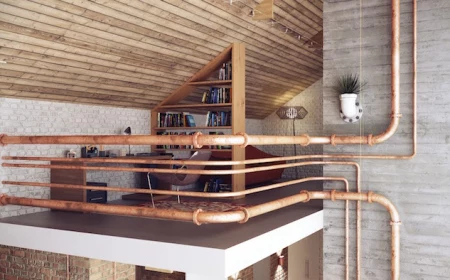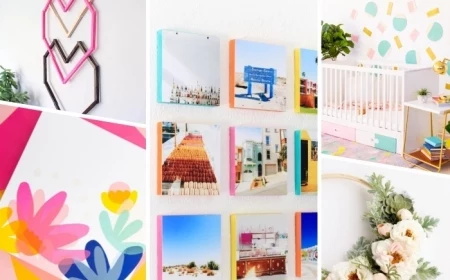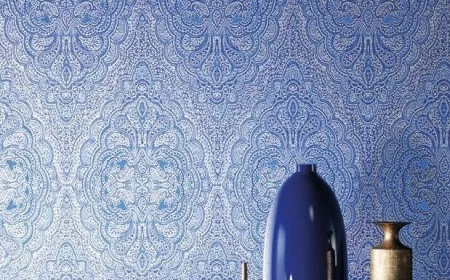Your Bedroom Walls Deserve Better: How to Create a Space That Truly Feels Like Home
You know, after years in the design world, I’ve seen the same thing over and over. People will pour their hearts and budgets into a stunning kitchen or a living room built for entertaining. But the bedroom? It often gets the leftovers—mismatched furniture, tired paint, and a general sense of being an afterthought. I once saw a home with a jaw-dropping main floor, but the master bedroom felt… forgotten. The owners admitted, “Well, no one really sees it but us.”
In this article
And that’s the whole point, isn’t it?
Your bedroom isn’t a showroom for guests; it’s your personal sanctuary. It’s the first thing you see in the morning and the last thing you see at night. The vibe of that space genuinely sets the tone for your rest, which affects your energy for the entire day. Treating your walls like a blank canvas waiting for scraps is a huge missed opportunity. We’re not talking about just throwing up a new color; we’re talking about making the walls themselves a foundational part of your comfort and character.
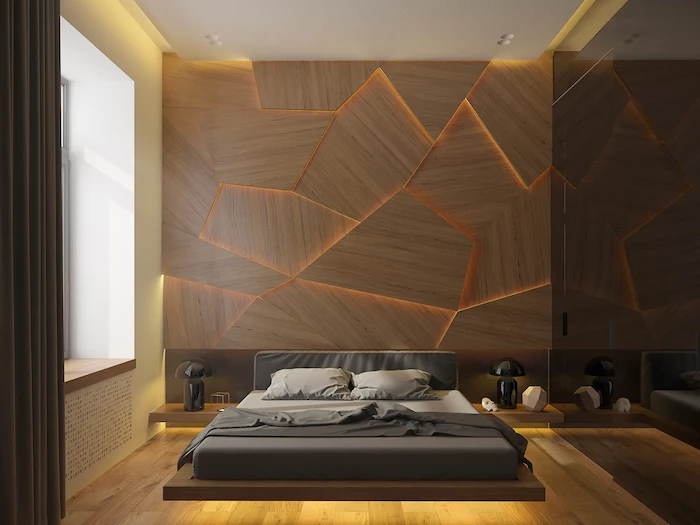
So let’s move beyond the idea of a single, random “accent wall” and dig into the details that pros use to make a bedroom feel truly special. This is all about building a room that just feels right, from the way light hits the paint to the subtle texture that adds a touch of luxury.
First Things First: Know Your Canvas
Before you even think about wandering through the paint chip aisle, you’ve got to do a little homework on your walls. A beautiful finish that lasts for years instead of peeling in two depends almost entirely on good prep. Honestly, this is the non-negotiable first step that separates a professional-looking job from a sloppy one.
What Are Your Walls Made Of?
Not all walls are created equal, and the material dictates everything that comes next.
Drywall: This is the standard in most modern homes. It’s a great surface, but it’s also a bit of a tattletale—it shows every little imperfection. If you’re working with brand-new, unpainted drywall, you absolutely must use a dedicated PVA (polyvinyl acetate) primer first. It seals the porous paper and joint compound so they don’t soak up your expensive paint at different rates, which would leave you with a blotchy, uneven mess.
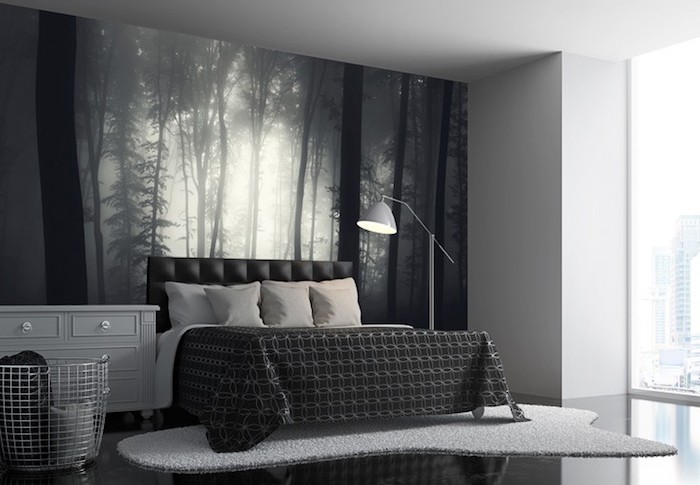
Plaster: Common in older homes, plaster is dense, hard, and can have a beautiful, almost organic feel. But it can also be brittle. Before you start, press on the walls and look for crumbling spots or big, spidery cracks. Tiny hairline cracks are usually just cosmetic.
Quick tip for fixing those: Gently widen the crack just a tiny bit with a utility knife, fill it with a flexible patching compound (not standard spackle!), sand it completely smooth when dry, and then spot-prime the patch before you paint. Problem solved.
Exposed Brick or Concrete: These surfaces bring amazing texture to a room, but they are thirsty. I’ve seen people try to paint raw brick with regular interior paint and end up needing four or five coats. You’ll save yourself a ton of time and money (we’re talking double the paint cost!) by using a proper masonry primer first. It’s designed to fill the pores so your paint can sit on top. One or two coats of primer will get the job done right.

Let There Be (the Right) Light!
Light is a total game-changer; it can make or break your paint color. I always tell people to tape paint samples to the wall and watch them throughout the day. That lovely warm beige you saw at the store can look sad and dingy under the cool light of a north-facing window or downright weird under your bedroom lamps at night.
And speaking of lamps, check your lightbulbs! This is a huge one. For a bedroom, you want a warm and relaxing glow, so look for bulbs with a color temperature between 2700K and 3000K. But here’s the pro secret: also check the CRI, or Color Rendering Index. A low CRI (anything below 90) will distort colors and make your beautiful walls look sickly. I learned that the hard way when a client’s perfect taupe walls turned a bizarre shade of green at night, all because of cheap bulbs.
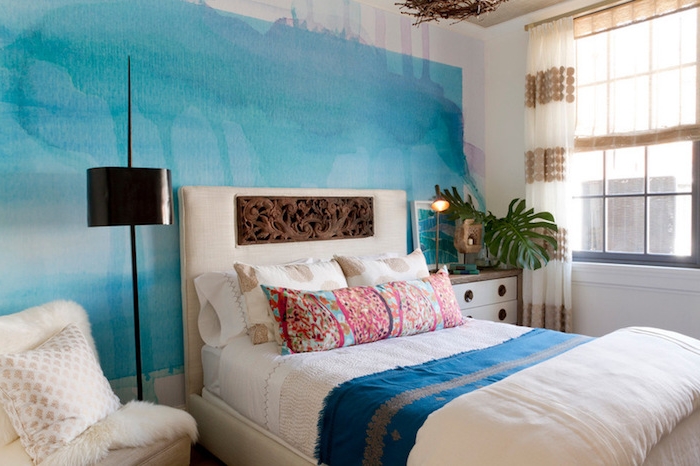
Your Quick Win Today: Go check your bedroom lightbulbs. If they don’t have a CRI of 90+, spend the $20 on a new pack. It’s the fastest, cheapest way to instantly improve your room’s atmosphere.
Choosing Your Finish: It’s Not Just About Color
Picking a paint color is the fun part, but choosing the sheen is the technical part that really affects the final look and feel. The amount of shine impacts durability and how well it hides flaws.
- Matte (or Flat): This finish has zero shine, which makes it a superhero at hiding imperfections. It’s fantastic for old plaster walls or any surface that isn’t perfectly smooth. The trade-off? It’s the least durable and can scuff if you look at it wrong. I mostly use it for ceilings or very low-traffic adult bedrooms.
- Eggshell: This is my go-to for most bedroom walls. It has a soft, low luster (like its namesake) that gives walls a velvety depth. It’s the perfect middle ground—durable enough to be wiped down but still flat enough to hide most minor flaws. A gallon of high-quality paint with this finish, like Benjamin Moore or Sherwin-Williams, will run you $50 to $90, but the superior coverage is worth every penny.
- Satin: A step up in shine, satin is even more washable and durable, making it a solid choice for trim, doors, or a kid’s bedroom. But be warned: that extra sheen will highlight every single bump, nail pop, and drywall seam. Your wall prep has to be flawless if you go with satin.
Oh, and by the way, always use a dedicated flat paint for your ceiling. It’s formulated to minimize glare and reduce splatter when you’re rolling it on overhead. Trust me on this.
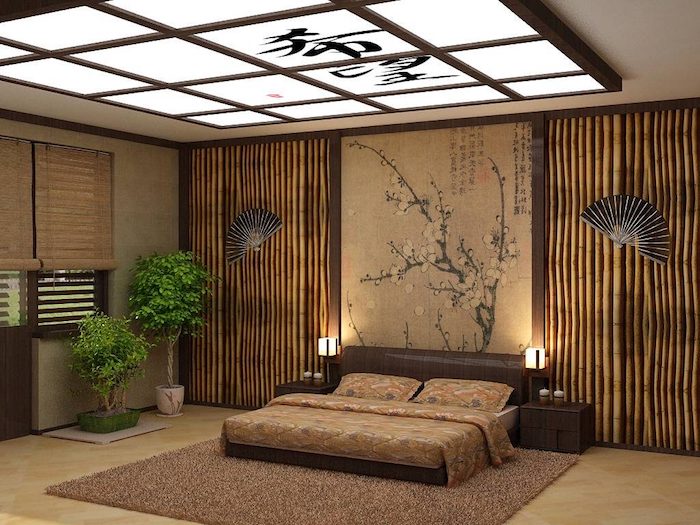
Beyond a Single Coat: Next-Level Paint Ideas
Color Drenching: This is a cool, contemporary technique where you paint everything—walls, trim, baseboards, doors, and sometimes even the ceiling—in the same color. It makes a room feel bigger and more unified because there are no contrasting lines to stop the eye. It’s especially effective for making a small room feel surprisingly airy and expansive.
The Thoughtful Accent Wall: Forget the cliché of one loud, random wall. A modern accent wall should have a purpose. The best place for it is usually behind the headboard, as it anchors the most important piece of furniture. Instead of just a different color, consider a different texture. A wall finished with soft, chalky limewash or a suede-effect paint adds sophistication that a simple color can’t match.
Wallpaper and Murals: Adding Instant Character
Wallpaper can completely transform a room, but it demands patience and precision. My first wallpapering attempt was a lesson in humility—I didn’t properly account for the pattern repeat and ran out of paper with one strip left to go. It was an expensive mistake. So, rule number one: always order about 15% extra material for mistakes and complicated cuts.
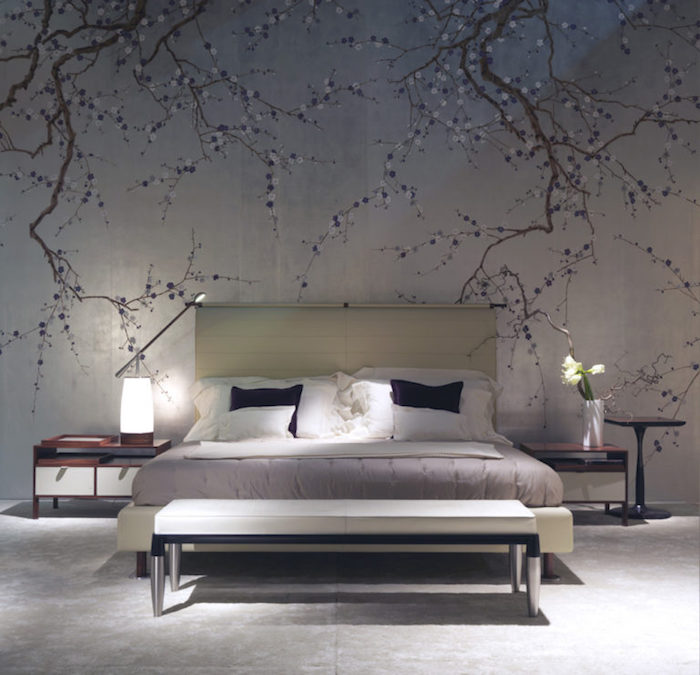
For DIYers, I almost always recommend Non-Woven wallpaper. It’s durable, tear-resistant, and most types are “paste-the-wall,” which is so much easier and cleaner than trying to handle giant, sticky, wet sheets of paper. If you’re thinking about a mural, which is one large-scale image, I’d seriously consider hiring a pro. Hanging a mural is a specialized skill, and being off by even a quarter of an inch can ruin the whole effect. Hiring a professional installer for an average bedroom might cost between $400 and $800 plus the materials, but it ensures a perfect result.
Give Your Walls Some Dimension
Sometimes the most stunning walls have less to do with color and more to do with shadow and depth. Adding architectural moulding is a surefire way to make a room feel more custom and high-end.
Board and Batten or Wainscoting: This classic look adds so much character. A good rule of thumb for height is to place the top rail at either one-third or two-thirds of the wall’s height. Placing it exactly in the middle can visually slice the room in half. For a standard 8-foot ceiling, a rail around 32 inches looks traditional, while a taller one around 54-60 inches feels more modern.
To save money: Use MDF (Medium-Density Fiberboard) instead of solid wood. It’s cheaper, won’t warp, and gives you a perfectly smooth surface for paint. A DIY board and batten project for a small room is totally doable for under $200 in materials if you have a miter saw. Hiring it out to a carpenter could easily be $1,000+, but the finish will be impeccable.

Heads up! A common mistake is trying to paint over old, glossy trim without prepping it. New paint will just scratch or peel right off. Always give shiny surfaces a quick scuff with 120-grit sandpaper and wipe them clean before you even think about painting. This little step makes all the difference.
Inspirational Gallery
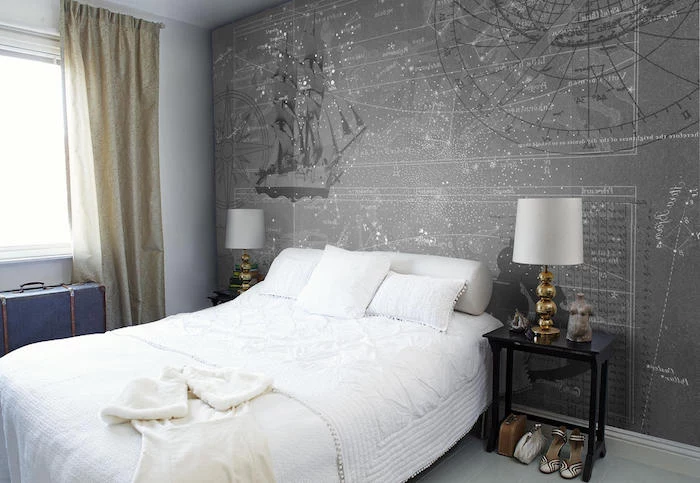
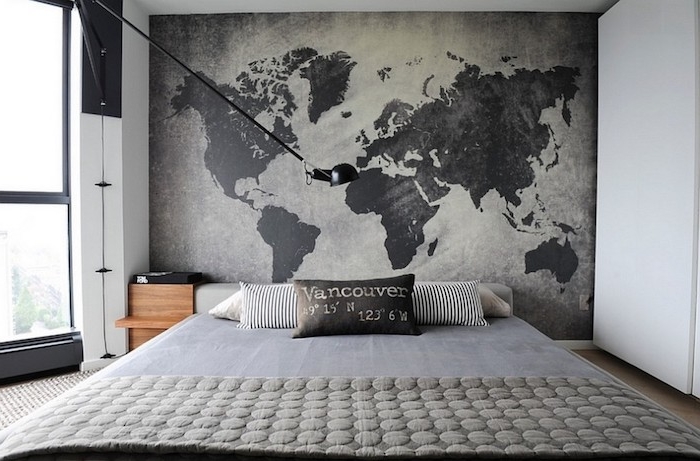
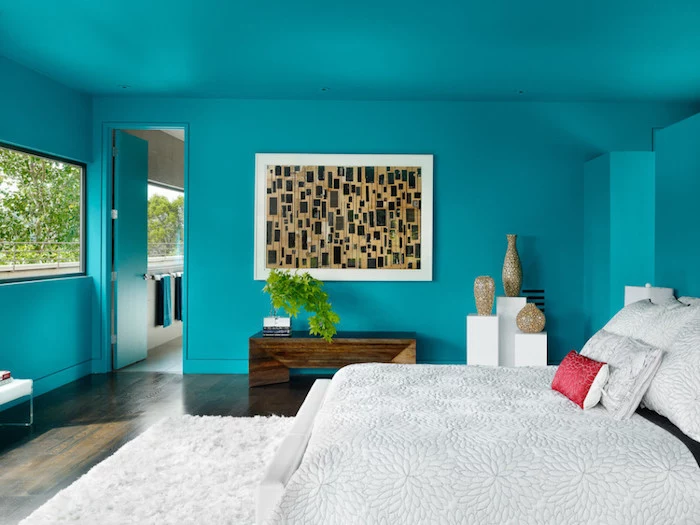
The right finish is everything: Matte paint, like Farrow & Ball’s Estate Emulsion, provides a velvety, chalky finish that masterfully hides minor surface imperfections, perfect for creating a serene, immersive feel. However, it’s less durable. An eggshell or satin finish has a slight sheen, making it more resistant to scuffs and easier to clean—a practical choice for walls behind a headboard or in high-traffic areas of the room.
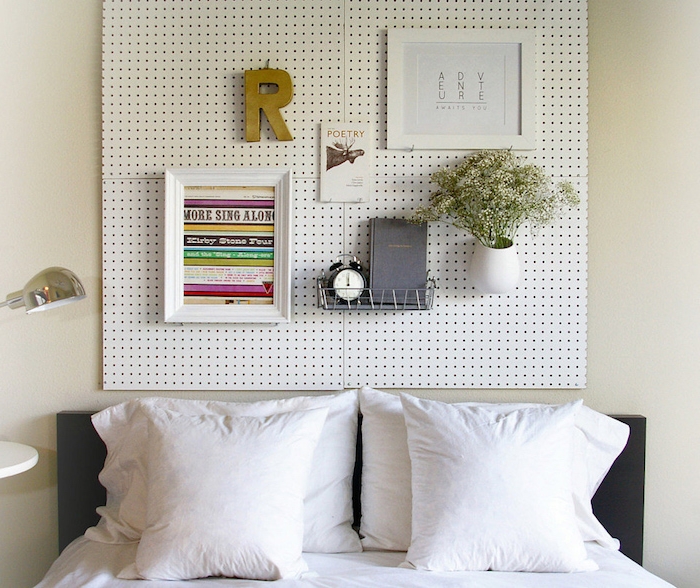
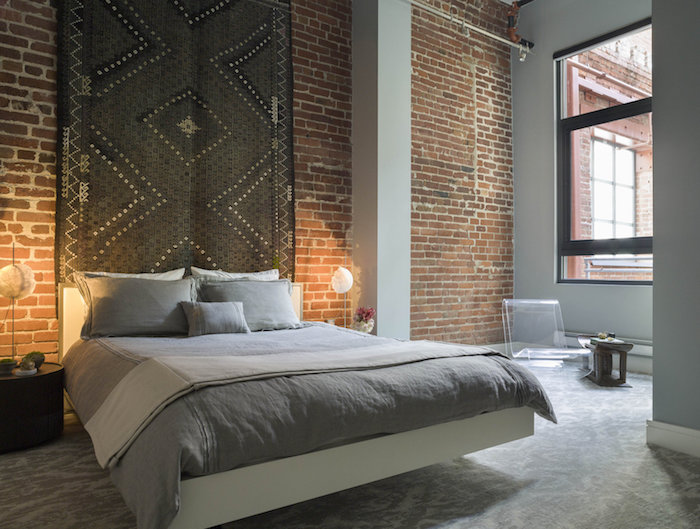
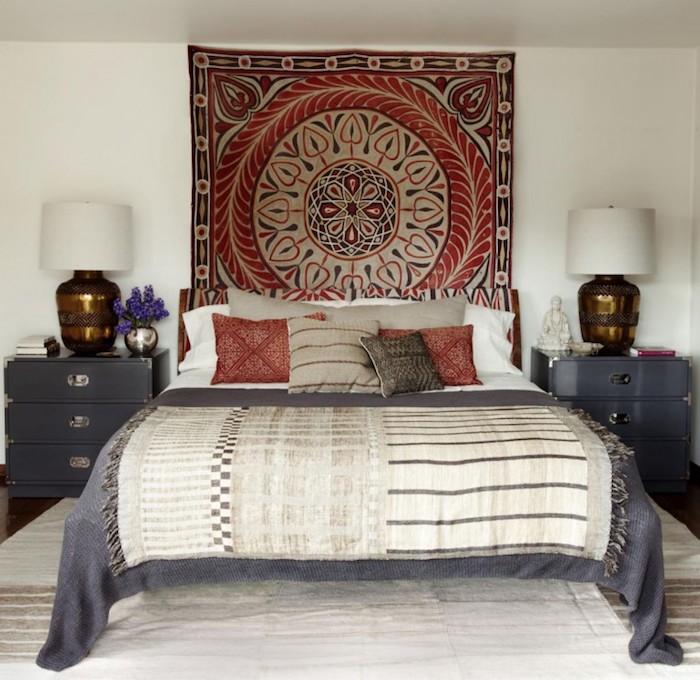
A study by Travelodge found that people with blue bedrooms get the most sleep, averaging 7 hours and 52 minutes per night.
The reason? Receptors in our eyes, which are most sensitive to the color blue, send signals to our brain to reduce heart rate and blood pressure. For the ultimate calming effect, consider shades like Benjamin Moore’s
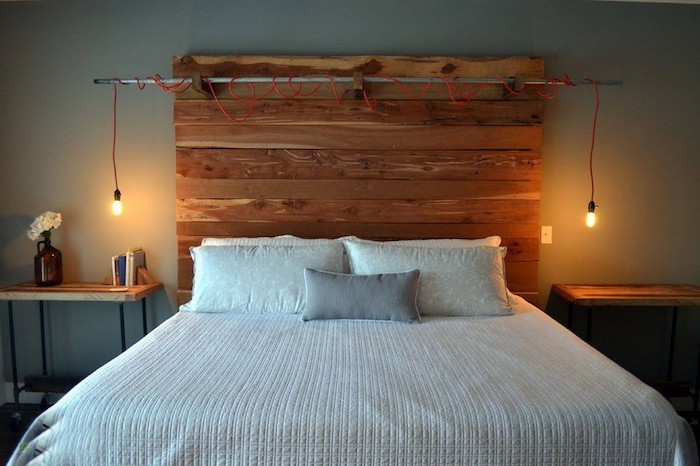
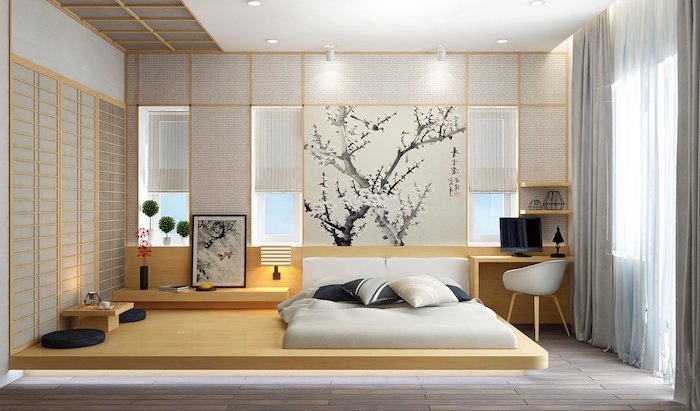
- Create a sense of depth and sophistication.
- Absorb light, making sleep easier, especially in rooms with light leakage.
- Make architectural details and artwork pop dramatically.
The secret? Painting your bedroom in a dark, moody color. Don’t be afraid of charcoal, deep navy, or even forest green. When balanced with soft lighting and lighter textiles, the effect is a cozy, enveloping sanctuary, not a cave.
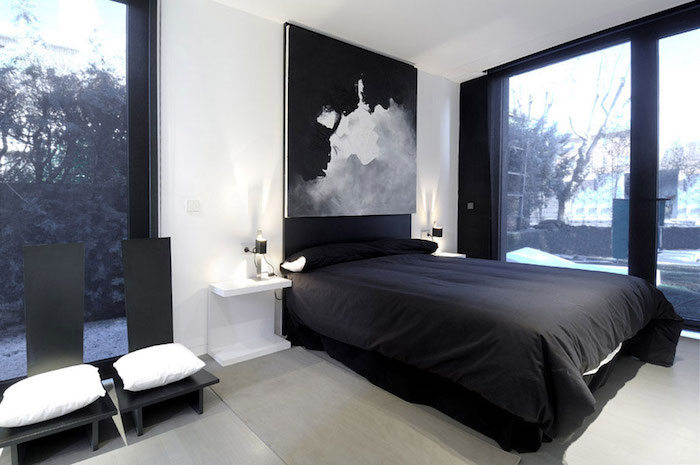

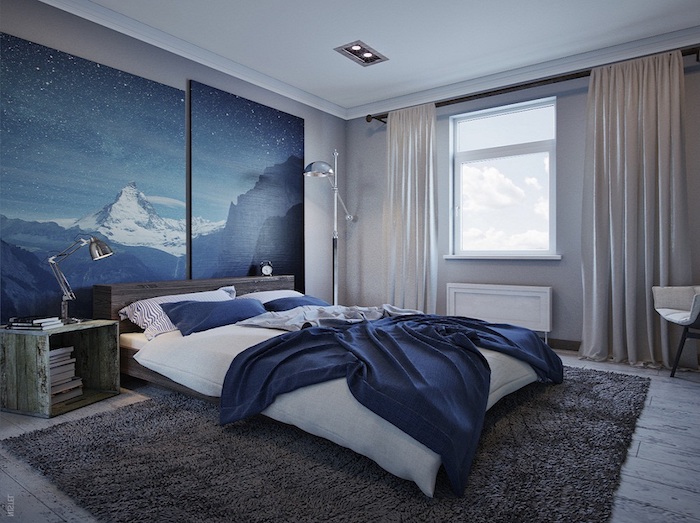
Want texture and character without committing to plaster?
Consider a limewash paint. Made from slaked lime and natural pigments, it creates a unique, matte finish with subtle movement and soft tonal variations. Unlike regular latex paint that forms a film on the wall, limewash penetrates the surface, resulting in a breathable and luminous quality. Brands like Bauwerk Colour and Portola Paints offer stunning, ready-to-use palettes for achieving this organic, European-inspired look.
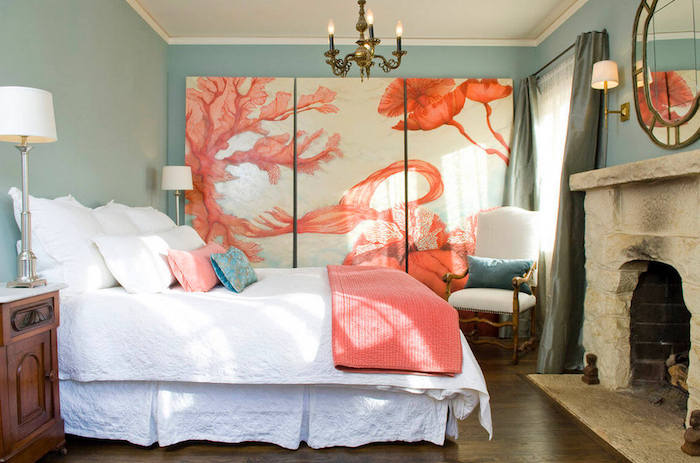

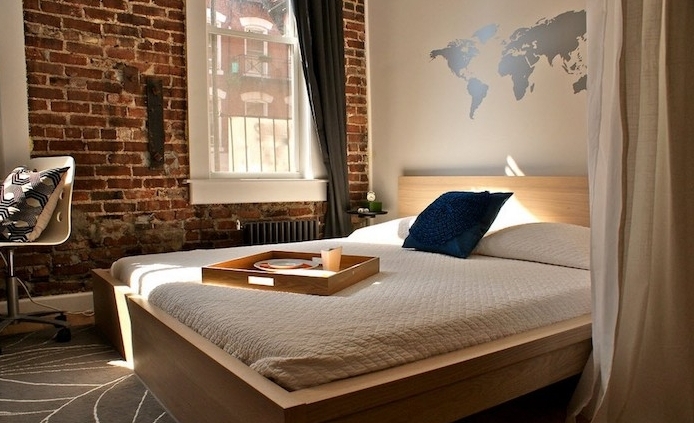
Don’t just hang art; create a story with a gallery wall. To avoid a cluttered mess, lay out all your frames on the floor first. Trace each frame onto paper, cut them out, and tape the paper templates to the wall with painter’s tape. This lets you visualize the final arrangement and adjust spacing perfectly before you drill a single hole. Mix frames, but keep a unifying element, like a consistent color palette or theme.
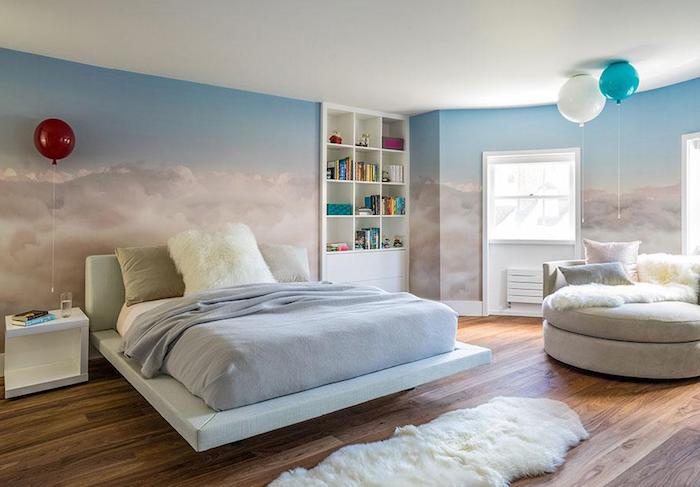
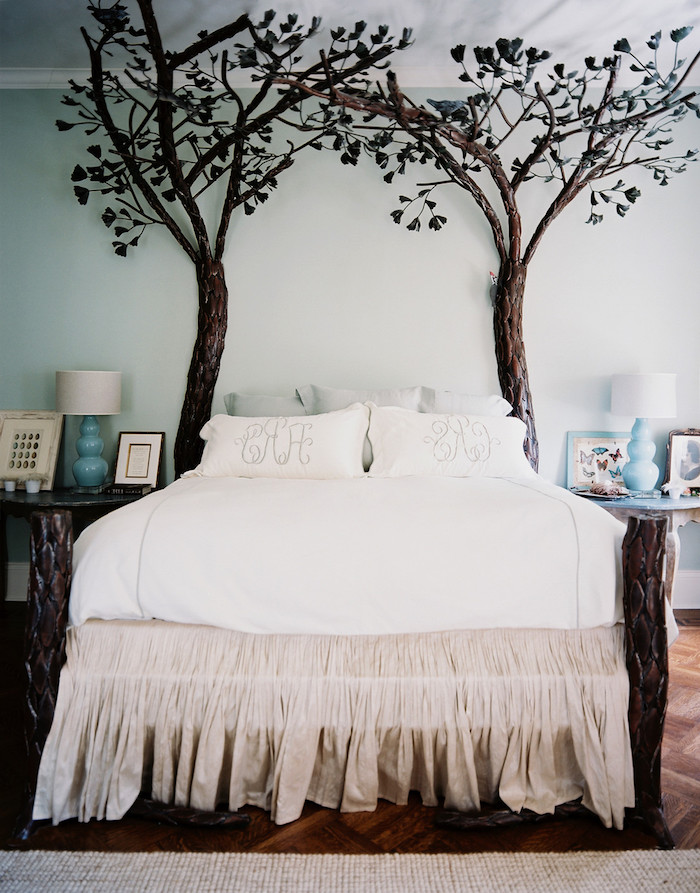
“The most common mistake I see is art hung too high. The center of the piece or grouping should be at eye level, which is roughly 57 inches from the floor.” – Whitney Jones, Interior Designer
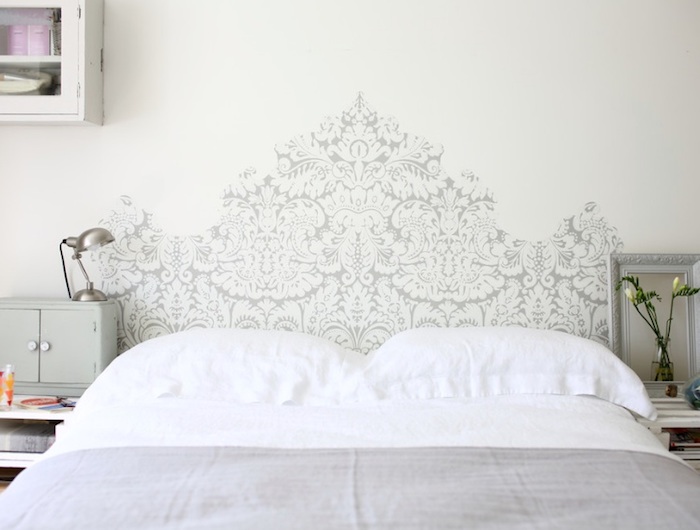
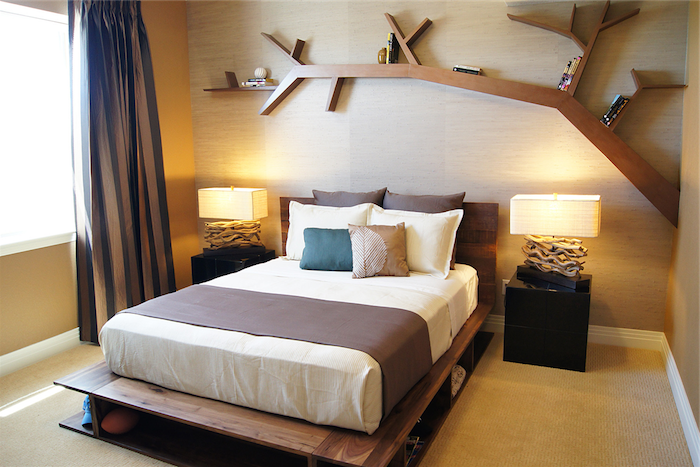
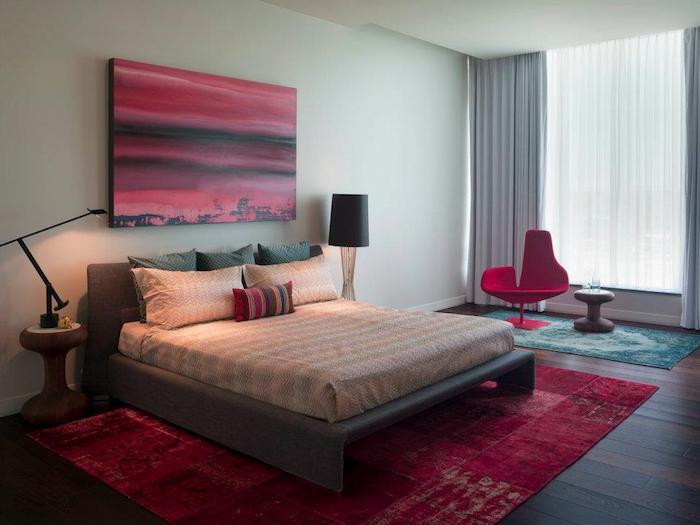
Removable Wallpaper: Ideal for renters or the design-indecisive. Brands like Chasing Paper and Tempaper offer stylish, high-quality options that peel off without damaging walls. Application can be tricky to align perfectly.
Traditional Wallpaper: A more permanent, professional-grade choice with a wider range of textures (grasscloth, silk). It’s more durable but requires paste and a more involved removal process.
For a long-term statement, traditional wins. For flexibility, removable is your best friend.
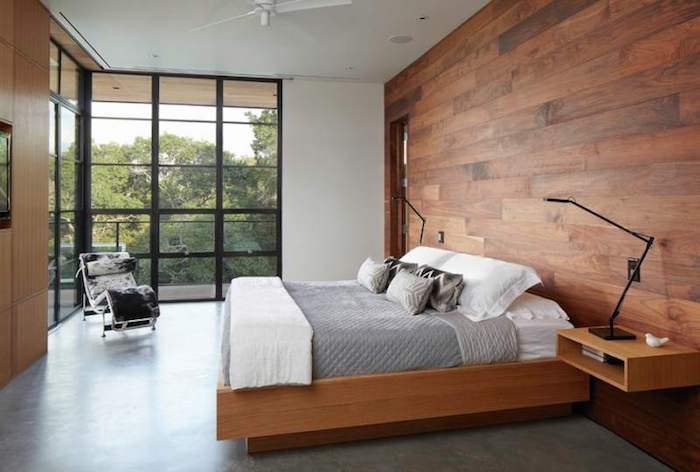
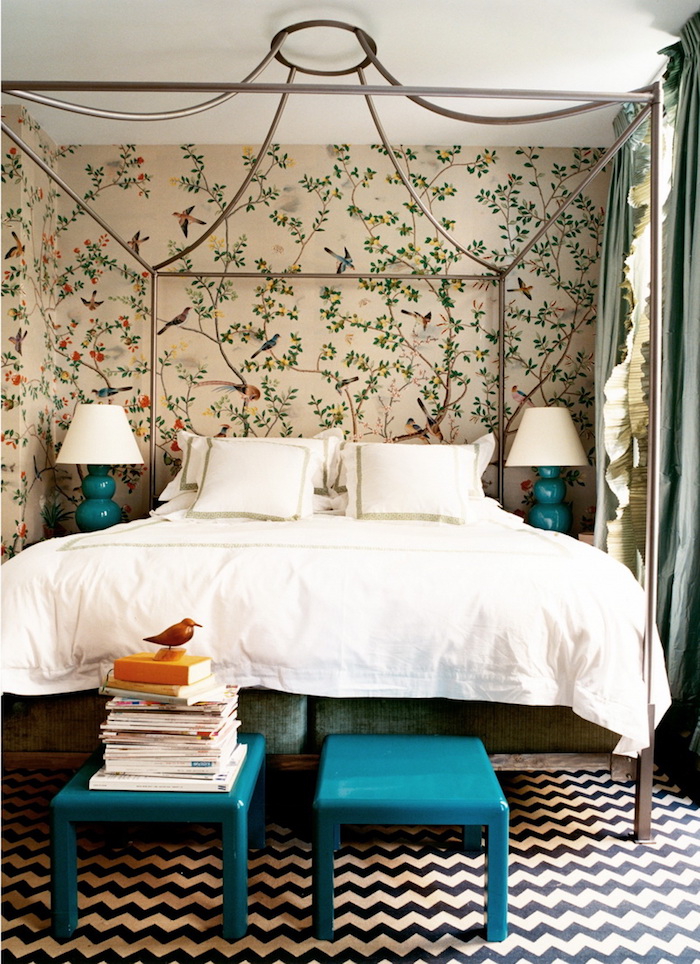
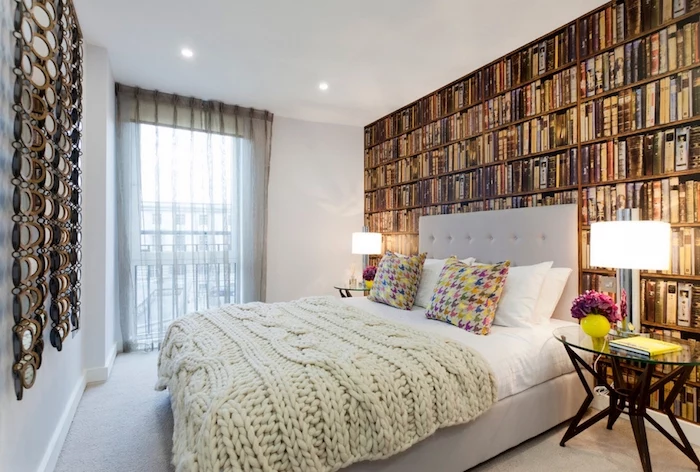
Embrace the Japanese philosophy of Wabi-sabi by celebrating imperfection. This isn’t about flaws, but about the beauty of natural textures and authentic materials. Think about a wall with a subtle tadelakt plaster finish, a hand-painted mural with visible brushstrokes, or a large, unframed piece of raw linen hung as a tapestry. It’s an approach that creates a deeply calming and soulful atmosphere, reminding us that home is a place for ease, not perfection.
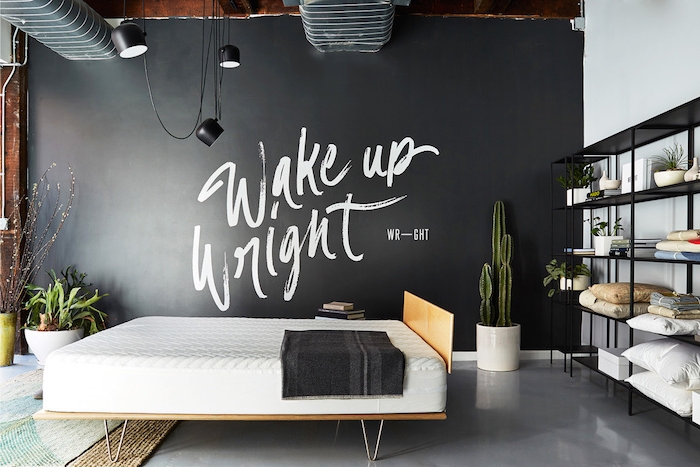
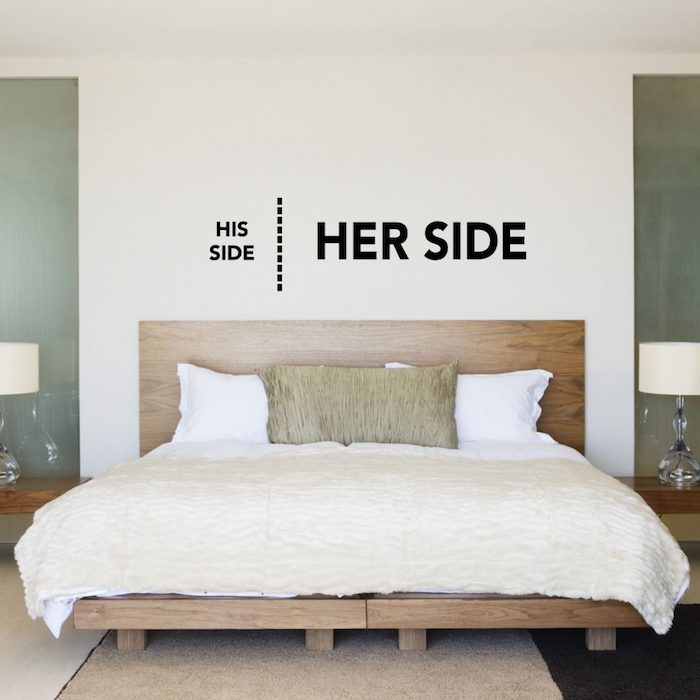
One of the hottest trends in bedroom design is the slatted wood wall, often placed behind the bed to act as an integrated headboard. It adds instant architectural interest, warmth, and a touch of mid-century modern flair. You can buy pre-made acoustic panels from brands like The Wood Veneer Hub that are surprisingly easy to install, providing not just style but also sound-dampening benefits for a quieter, more restful space.
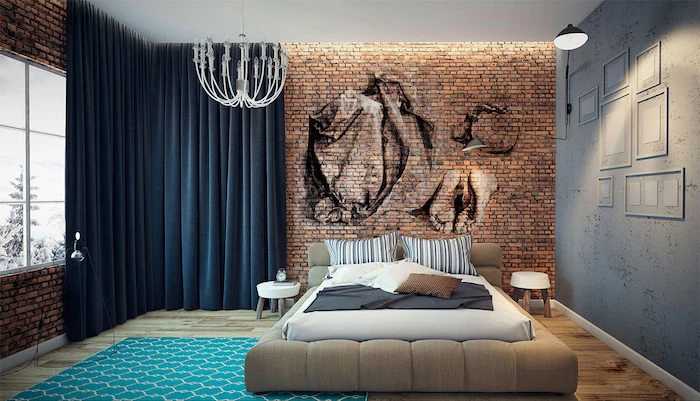
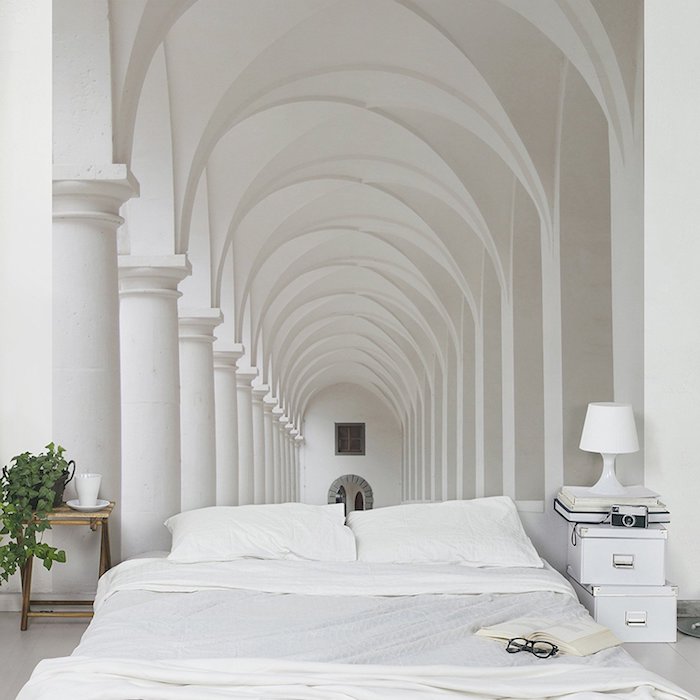
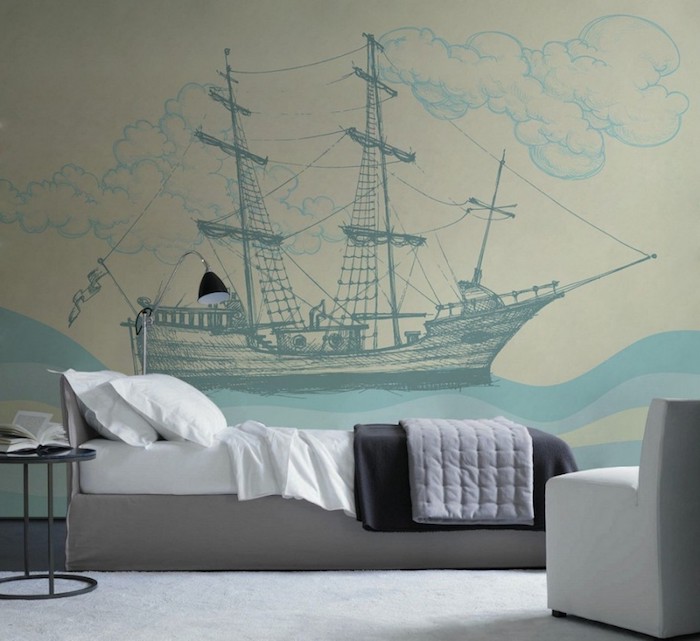
- Frame a large piece of beautiful fabric or a vintage scarf.
- Use high-resolution public domain art from museum websites and print it affordably.
- Paint a simple, bold geometric shape or arch directly onto the wall behind your bed.
- Hang a collection of woven baskets or hats for a bohemian touch.
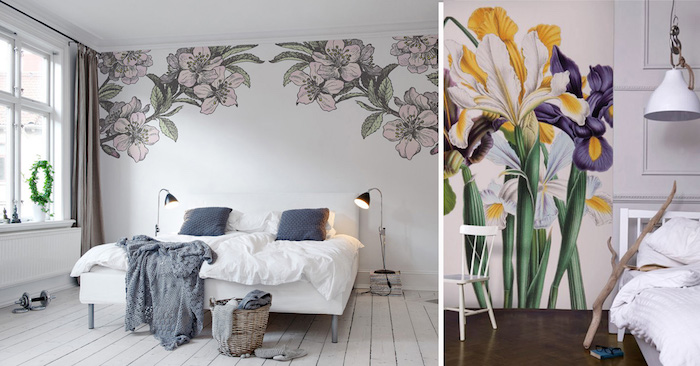

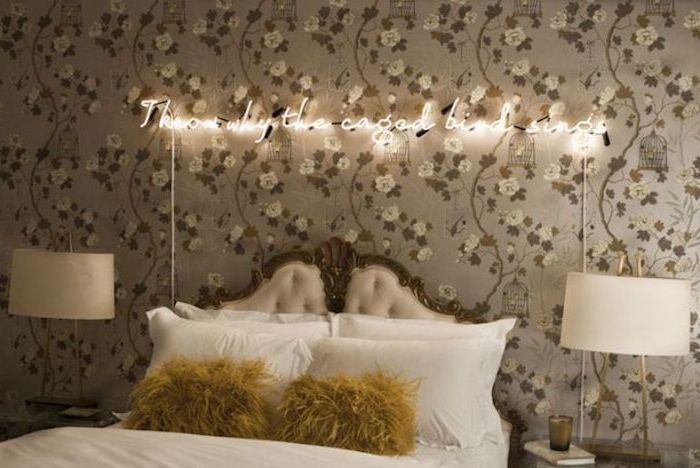
Important point: Your ceiling is the fifth wall. Leaving it stark white can make a beautifully designed room feel unfinished. For a dramatic, cocooning effect, paint it the same color as the walls. For a subtler touch, try painting it a few shades lighter than the wall color. In a room with high ceilings, a darker color can make the space feel cozier and more intimate.
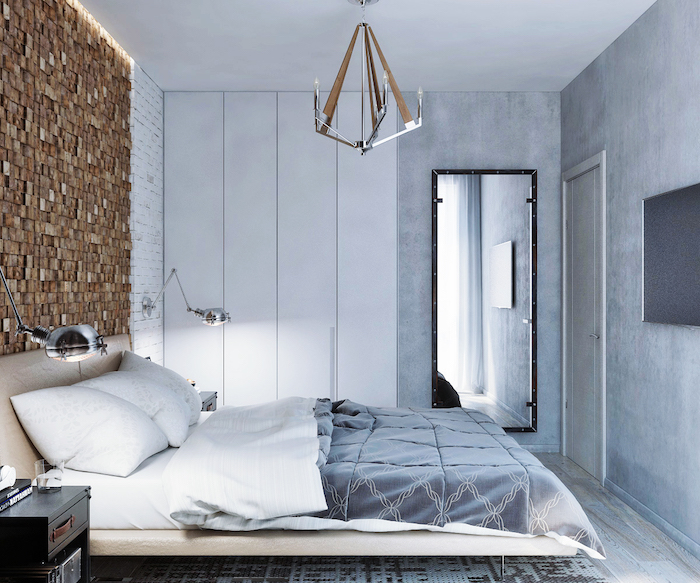
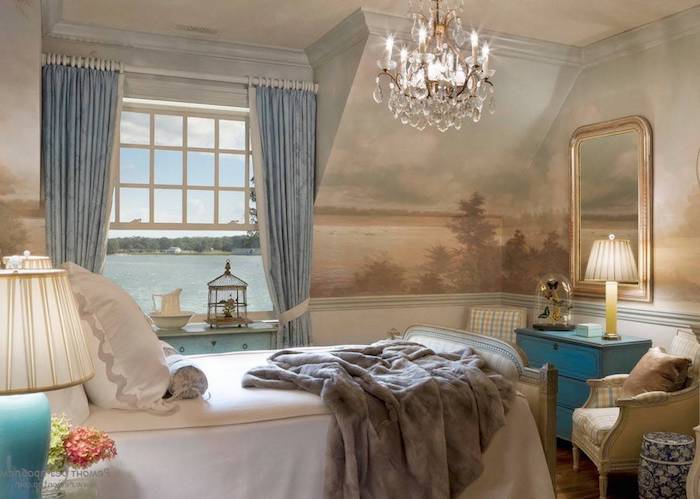
Achieve a high-end, classic look with simple picture frame molding. This technique uses thin pieces of trim to create elegant squares or rectangles on the wall, adding a sense of architecture and grandeur to a plain room. Here’s why it works:
- It adds visual interest without overwhelming the space.
- You can paint the interior of the ‘frames’ a slightly different shade or hang a single piece of art within each for a curated feel.
- It’s a relatively inexpensive DIY project with a huge design impact.
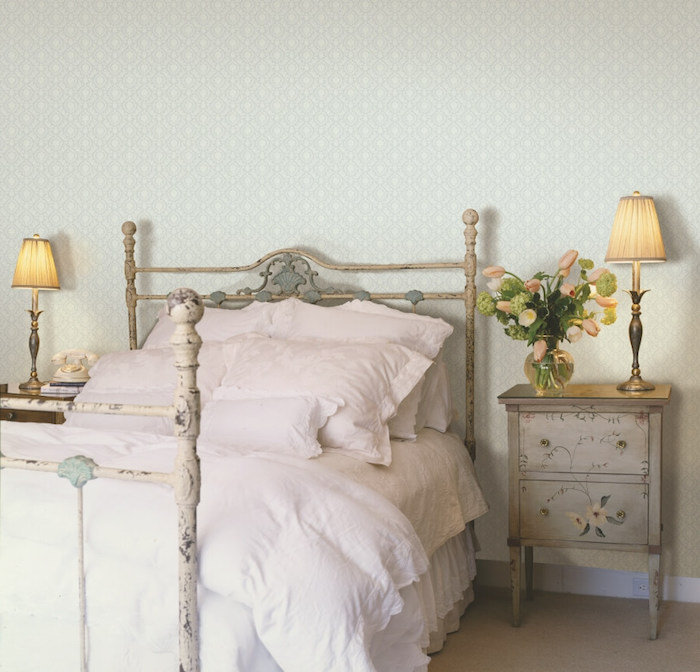

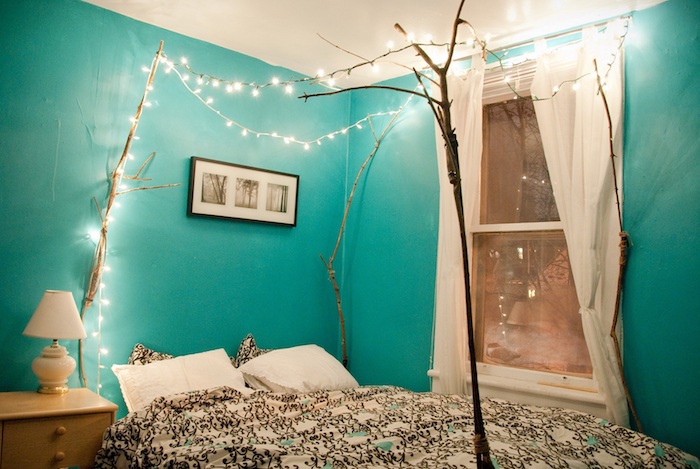
How do you make a statement on a wall you can’t paint or wallpaper?
Turn to textiles. A large, beautiful rug hung as a tapestry behind the bed can serve as a dramatic and sound-absorbing headboard. Look for flatweaves like kilims or dhurries, as their lighter weight makes them easier to hang. This approach adds color, pattern, and a soft texture that instantly makes a bedroom feel more comfortable and personal.

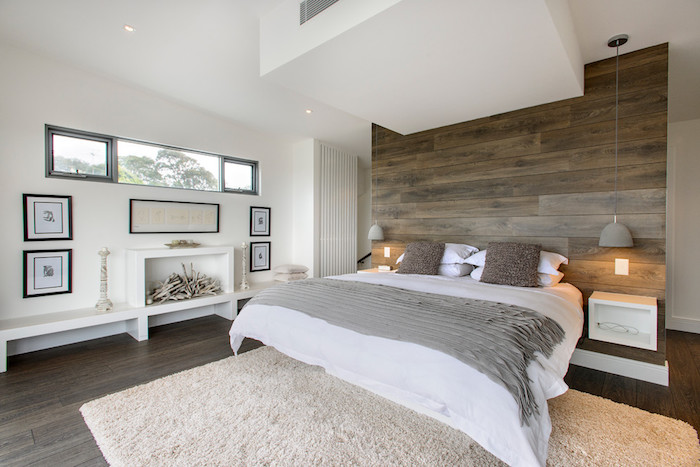
According to the EPA, concentrations of some VOCs (Volatile Organic Compounds) are up to ten times higher indoors than outdoors.
When painting your bedroom, where you spend a third of your life, opt for Low- or Zero-VOC paints. Brands like Clare, ECOS Paints, and Sherwin-Williams’ Harmony line are formulated without the airborne chemicals that can cause headaches and respiratory issues, ensuring your beautiful new walls contribute to a healthier environment.
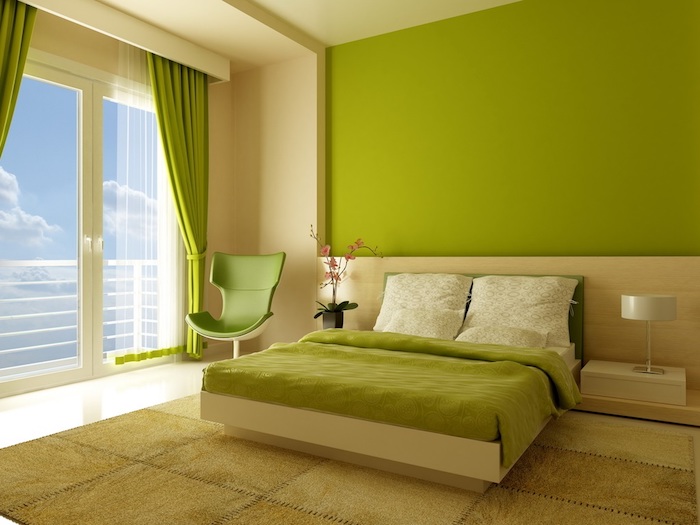
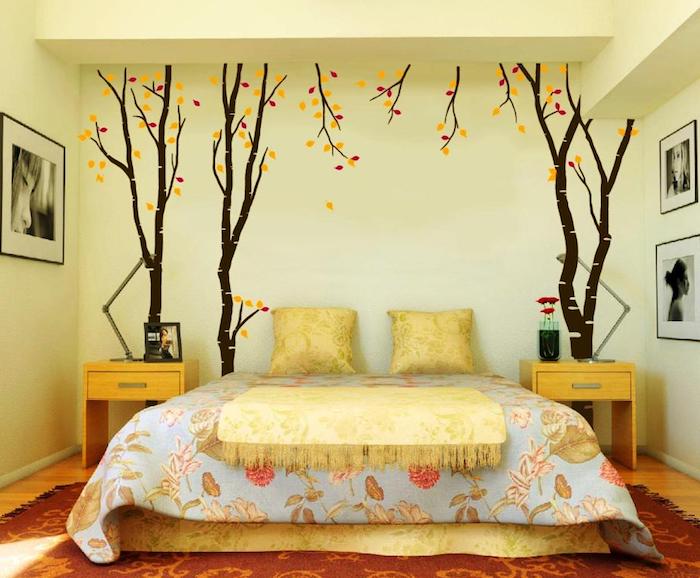

A well-placed mirror is a decorator’s secret weapon. In a smaller bedroom, a large floor mirror leaned against a wall can create the illusion of depth, making the space feel larger and brighter. To enhance a feature wall, hang a decorative mirror opposite a window to bounce natural light around the room, highlighting your chosen color or texture throughout the day.
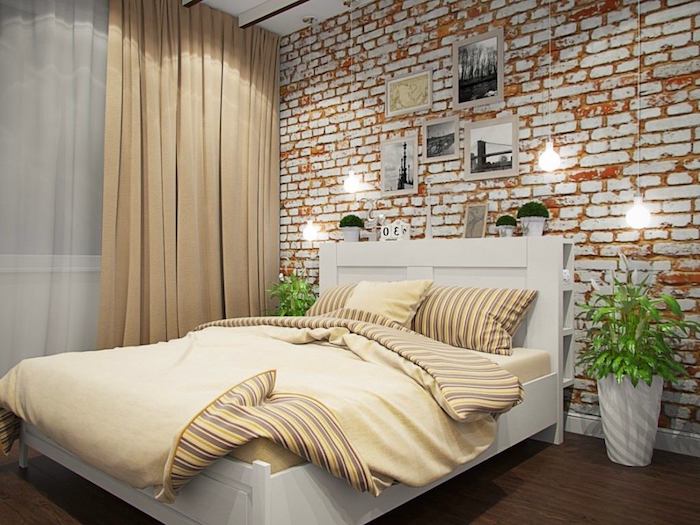
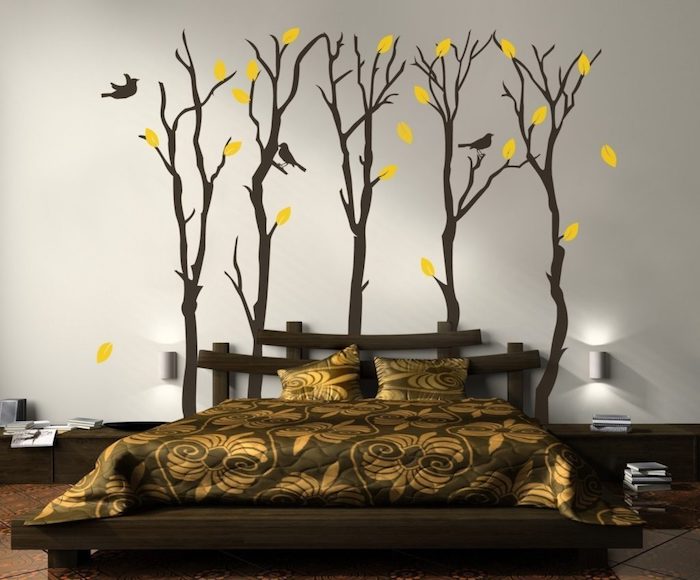
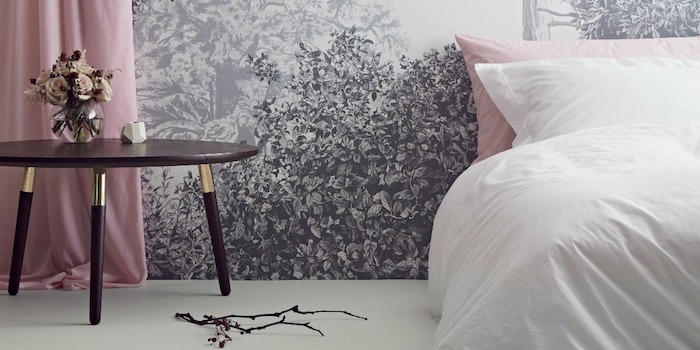
Molding & Trim: A crisp, clean line where the wall meets the ceiling or floor frames your design. Use a high-quality angled brush for precision.
Wall Texture: An orange peel or knockdown texture will require a thicker nap roller (1/2
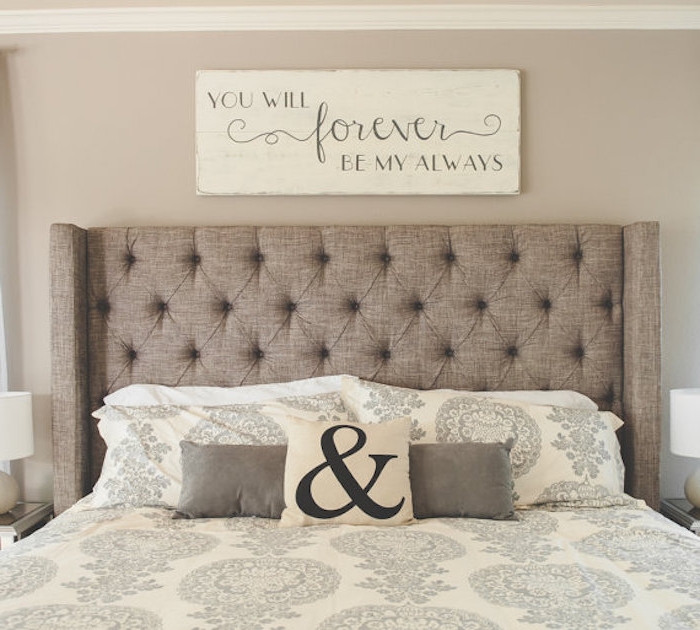
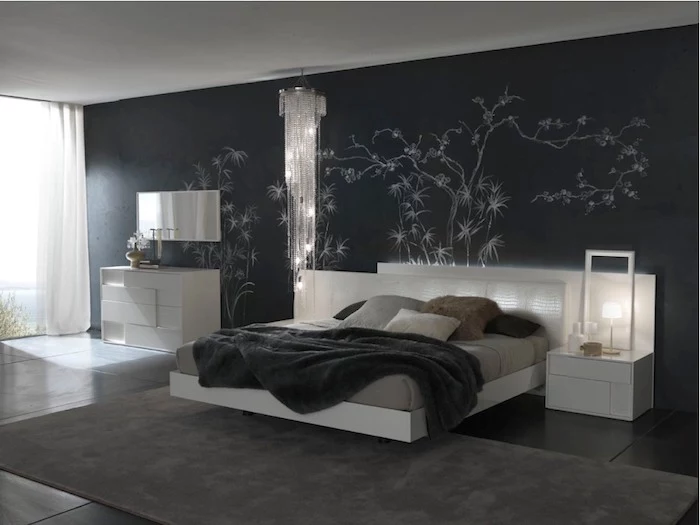
- Improved focus and concentration.
- A quieter, more private environment.
- Better sleep quality due to reduced external noise.
The secret? Acoustic wall panels. Forget corporate-looking foam. Modern options from companies like Artnovion or De-Fi offer beautifully designed panels in wood, fabric, and various 3D shapes that double as contemporary art while absorbing sound.
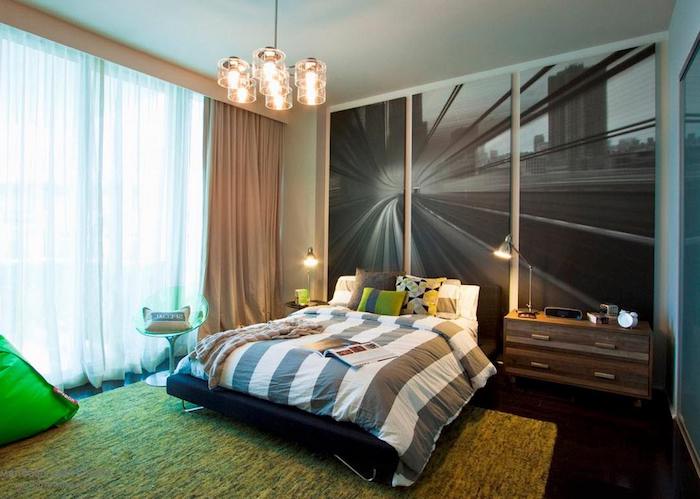
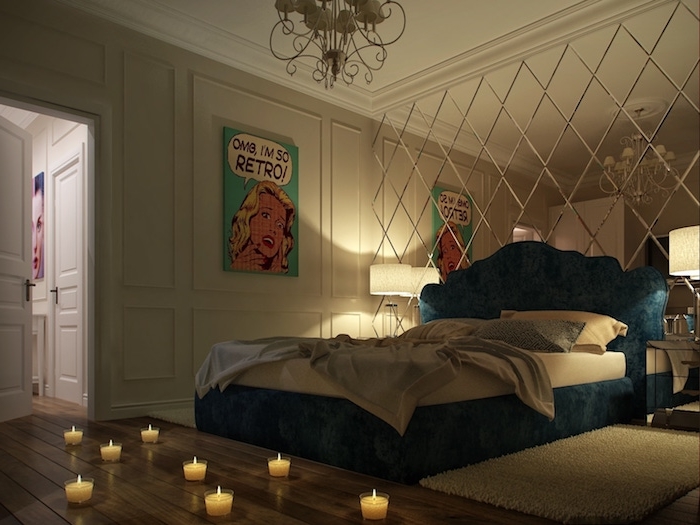
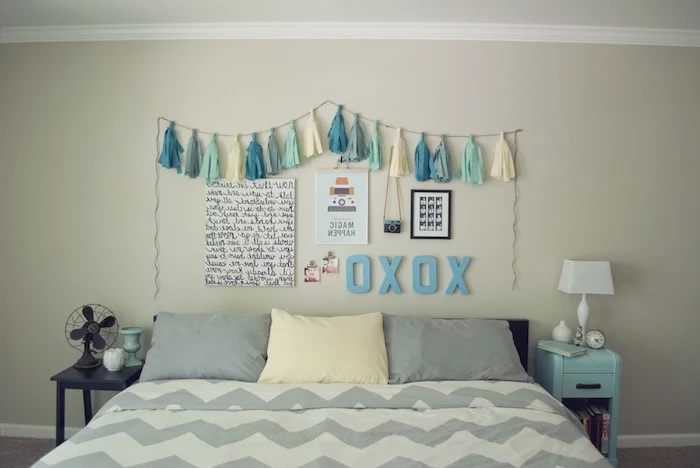
The light you have dramatically changes how a paint color looks. Before you commit to a gallon, test your top choices by painting large sample squares on different walls. Observe how they look in the bright morning light, the warm afternoon sun, and with your artificial lighting at night. A color that looks perfectly beige in the store might appear greenish or pinkish depending on your room’s unique lighting conditions.
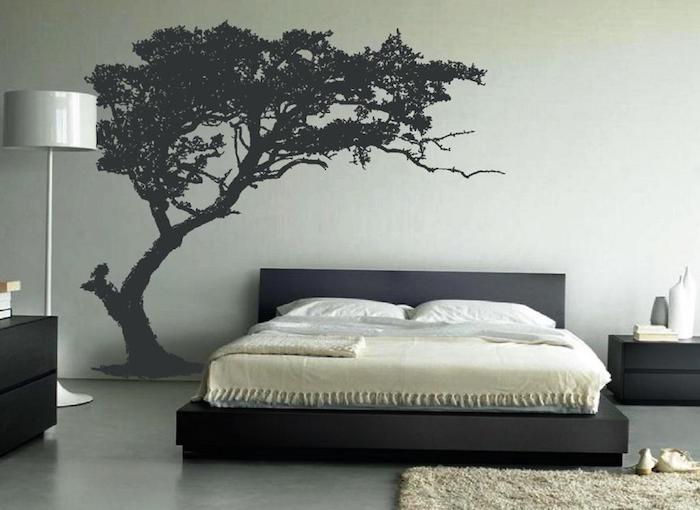
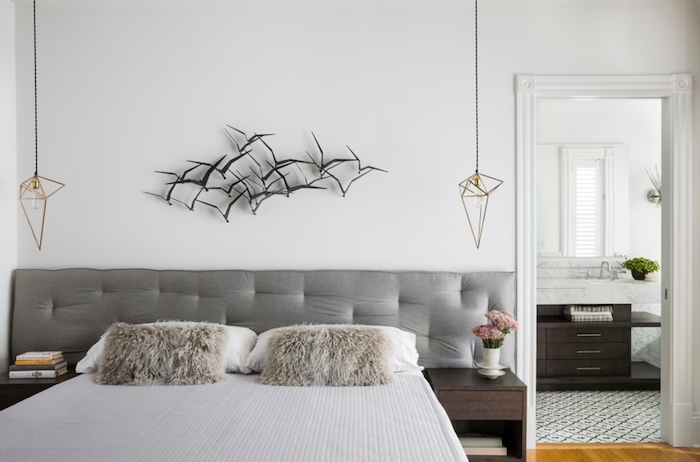

What if my walls have an ugly
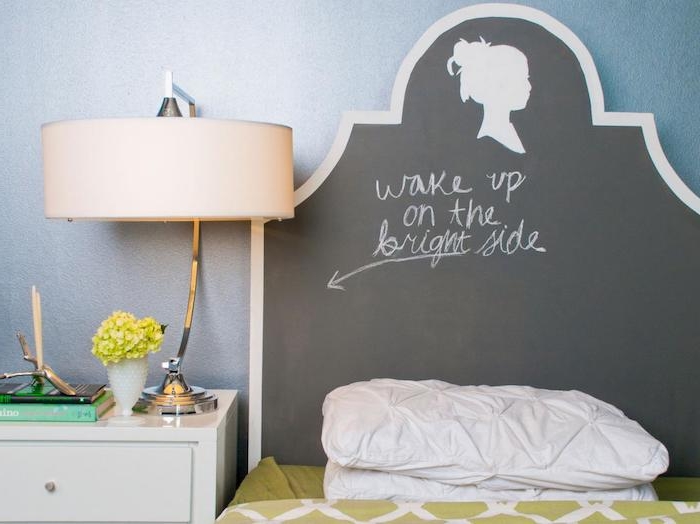

The painted arch is a major design trend that defines a space without structural changes. Use it behind a bed to create a faux headboard, or behind a desk or vanity to carve out a distinct zone. To create one, use a pencil, string, and a thumbtack to draw a perfect half-circle, then use high-quality painter’s tape like FrogTape to get a razor-sharp edge. It’s a high-impact, low-cost way to add custom architectural detail.
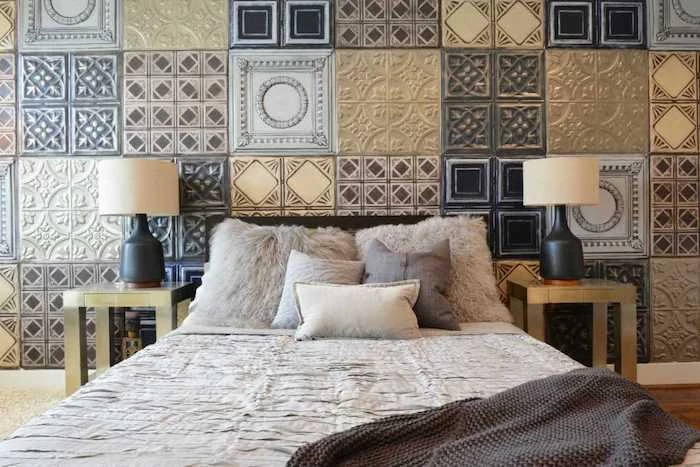
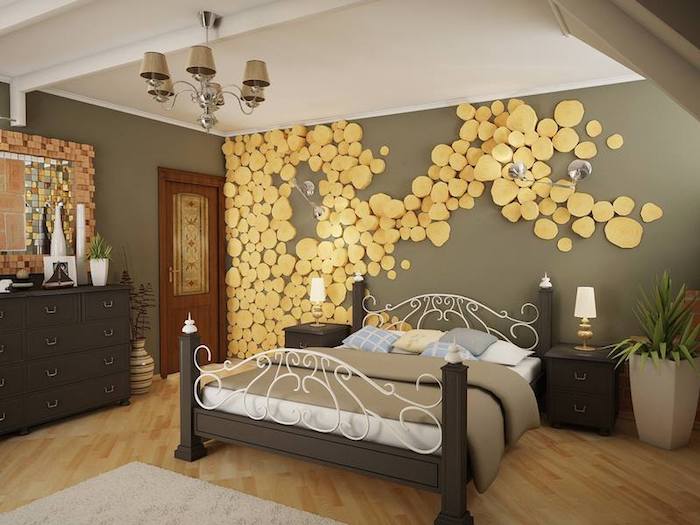
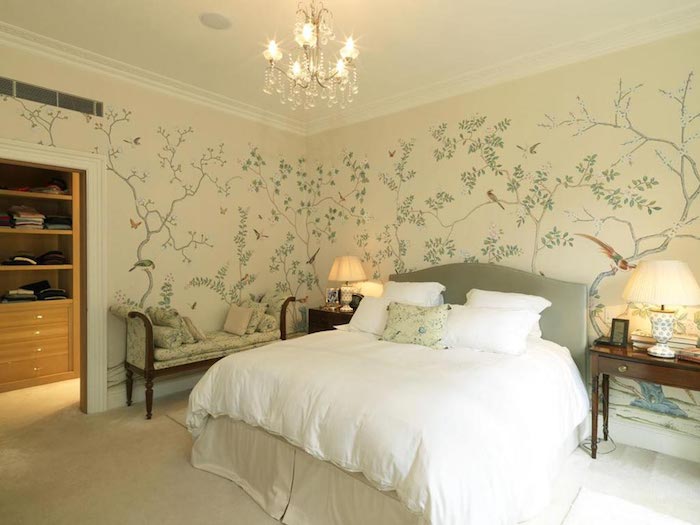
Fact: The human eye can distinguish about 10 million different colors, but our emotional response is often tied to just a few core tones.

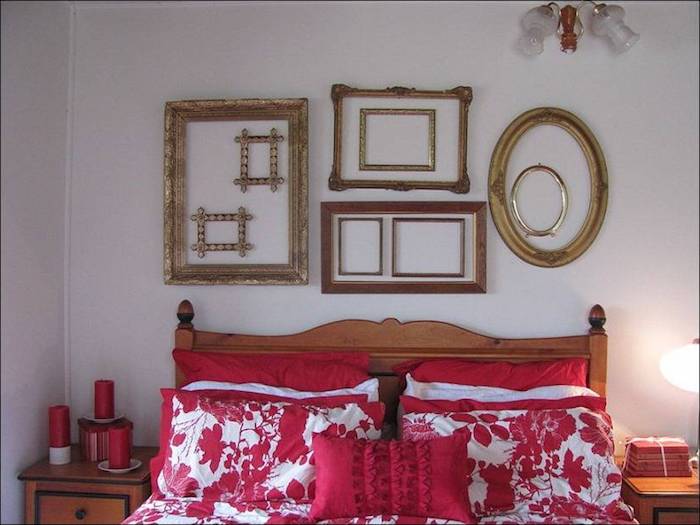
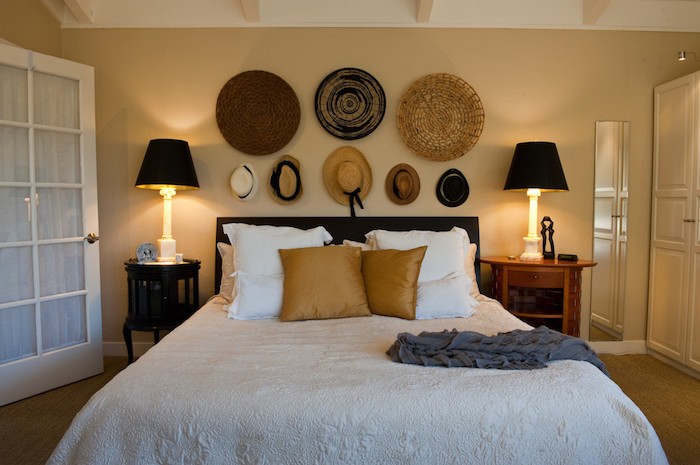
Important point: Don’t let your accent wall feel random. It should highlight a natural focal point. The best choice is almost always the wall your bed is against. Placing it on an opposing wall can visually split the room and create a sense of imbalance. The goal is to draw attention to the room’s main feature—the place of rest—not to a random, empty wall.
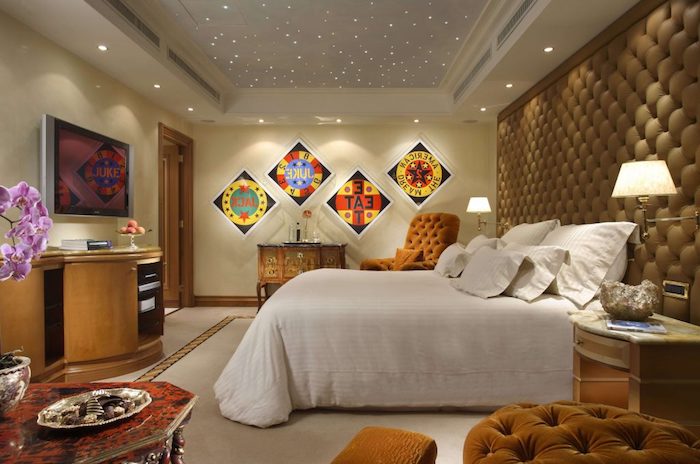
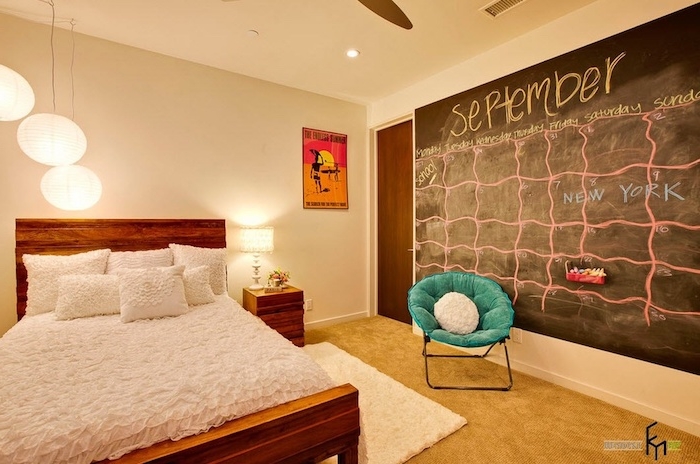
- Adds an unparalleled layer of softness and luxury.
- Provides excellent acoustic and thermal insulation.
- Can hide a multitude of surface imperfections on an old wall.
The secret? Upholstered or fabric-covered walls. While a high-end option, covering the wall behind your bed in a material like linen, velvet, or even a chic boucle from a supplier like Phillip Jeffries creates the ultimate cozy, five-star hotel feeling right at home.
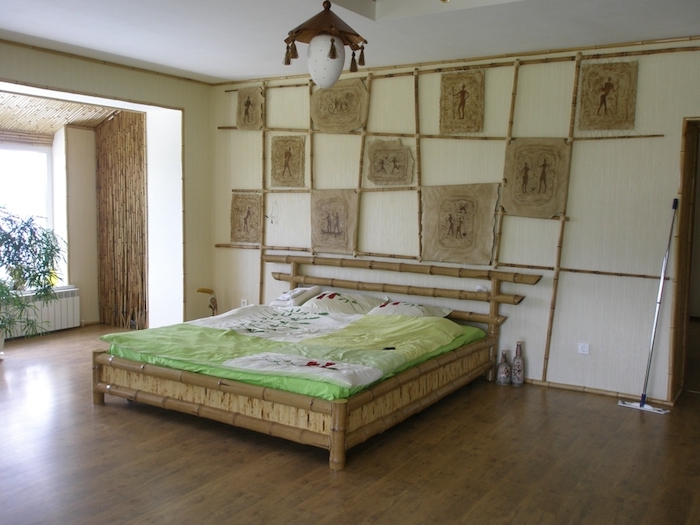
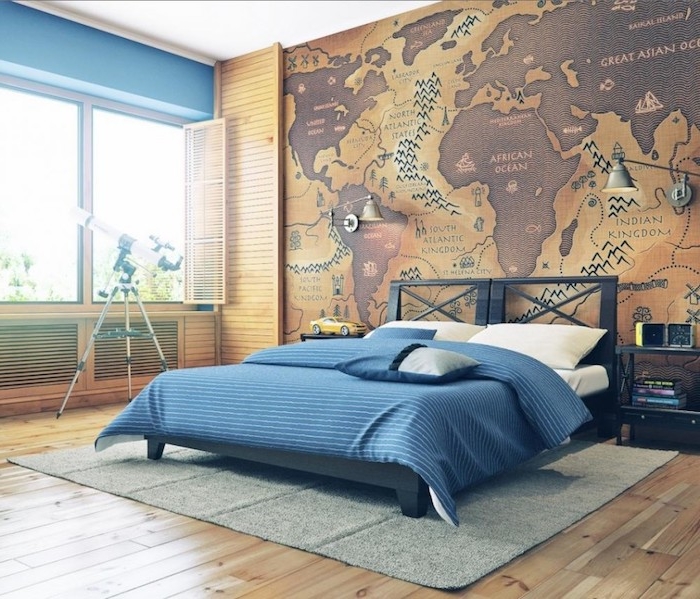
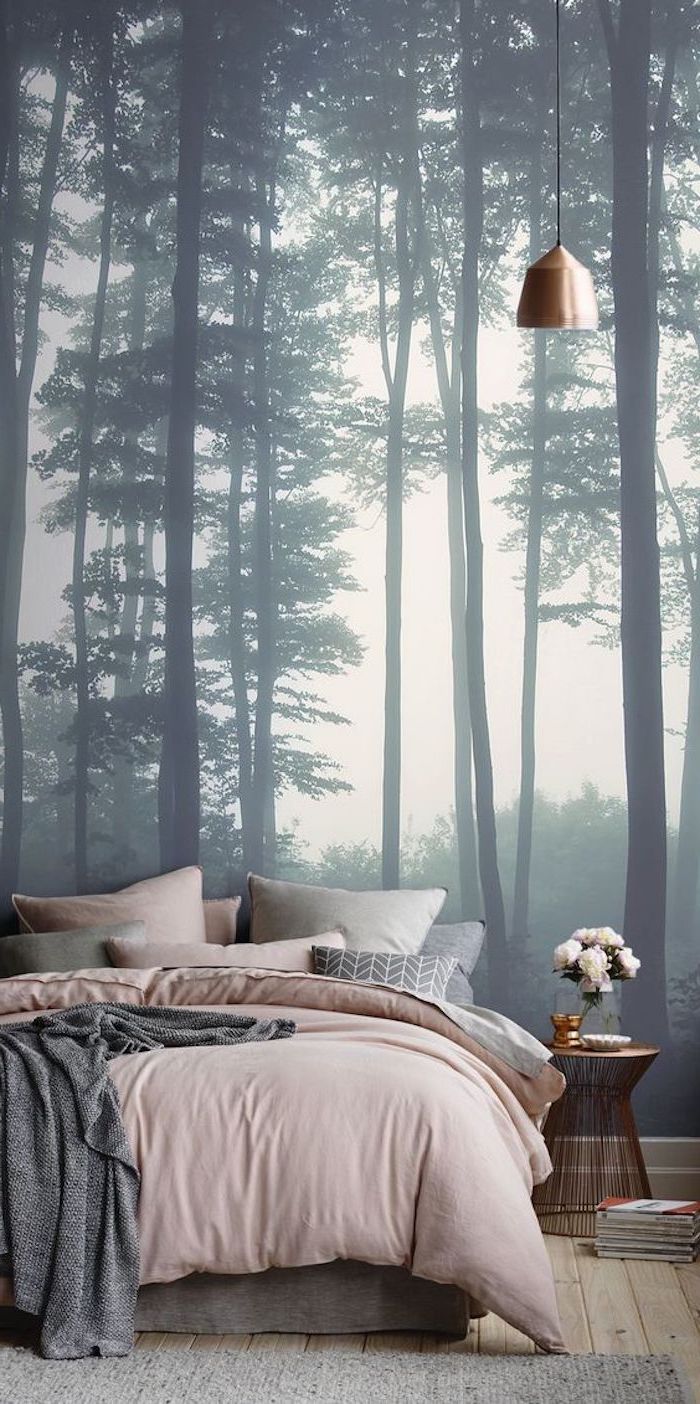
Want to go beyond paint? Wall murals have become incredibly accessible and sophisticated. Companies like MuralsWallpaper and Rebel Walls offer everything from misty forest landscapes to oversized floral prints and abstract watercolor designs. A mural on the wall behind your bed can act as a massive piece of art, setting a powerful mood and instantly transporting you. It’s the ultimate statement for a truly personalized sanctuary.
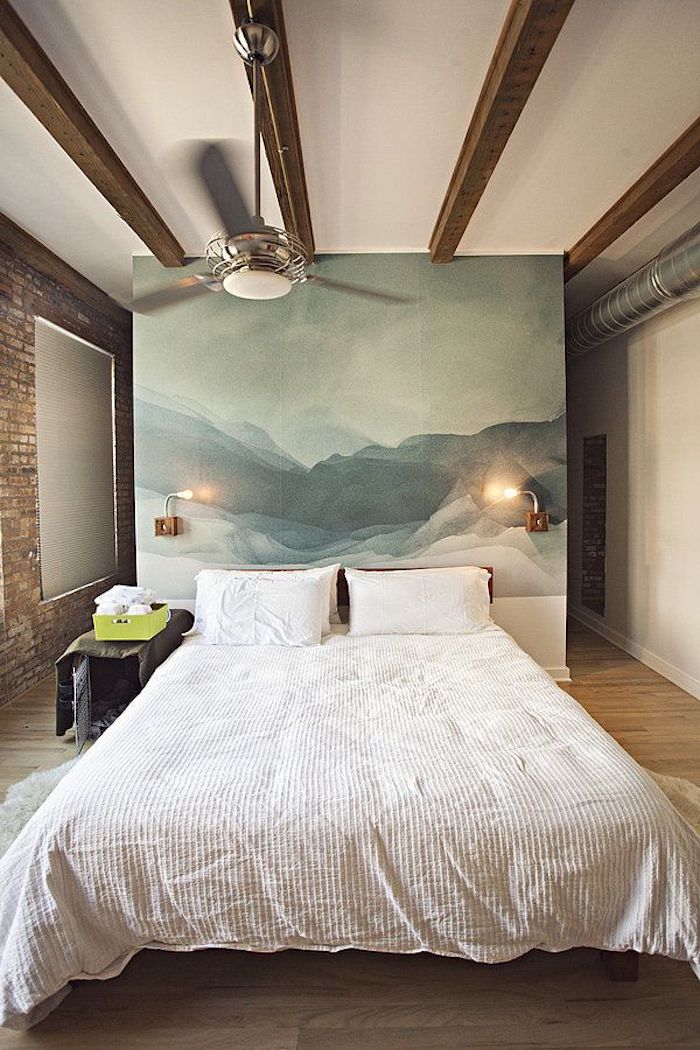
After perfecting your walls, don’t let plastic switch plates and outlet covers ruin the look. For a seamless, professional finish, either paint them the exact same color as your wall (use a spray primer first for adhesion) or upgrade to designer versions. Companies like Forbes & Lomax offer minimalist, high-end options, while Legrand’s Adorne collection provides modern, screwless plates in a variety of finishes to complement your design.



